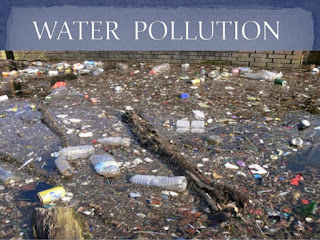Environmental Studies Link Plastic Pollutant To Infertility
One of
the most challenging aspects of being a woman is having to cope with infertility. This is because being fertile, as a woman, not only
satisfies the emotional desire a woman has for creating a life, but also a very deep physical and
biological urge.
It is very important for women to pay attention to their bodies in pursuing
health and pregnancy, especially to scientists' warming over environmental
exposure to toxic pollutants and chemicals. Fertility experts now believe that
is better to avoid environmental pollution from toxic chemicals in our homes
than to do sign up for body cleansing procedures. Where we live, the foods we
eat, and the contact we make with various household products have unbelievable
influence in our health and well-being.
For women with fertility issues,
environmental health researchers have been able to create a link between the
popular toxic pollutant, bisphenol-A or BPA and female infertility. In other
words, the more exposure a woman has with BPA in plastic pollution, the greater
she impairs her chances of having a baby. BPA is used to make plastic hard and
shatter-proof. Sources of environmental pollution from BPA include canned
foods, beverages, paper receipts and dental sealants.
There is strong evidence that BPA is
both an ovarian and uterine toxicant. This has been show in multiple studies
where high levels of BPA were found in women undergoing in vitro fertilization
or IVF. This has translated to lesser successful pregnancies. More recently, a study of 239 women was conducted to show how the environmental pollution of BPA
affects fertility in women. The result of this study showed that 17% of the
women, with high level exposure to BPA, had a baby. This compared to 54% of
women who had the lowest exposure to this environmental pollutant. Another
research study of 174 women undergoing IVF in Boston, showed high
concentrations of BPA in urine. This high level of this toxic chemical in urine
has been linked to reduction in cells that form eggs in ovaries. Women with
higher BPA levels had 24% fewer cells than than those with lower levels. Also
pollution by BPA has been linked with reduced estrogen activities in women and embryo quality.
BPA functions by mimicking the hormone estrogen and also disrupts endocrine activities in the body which is crucial to
brain function development of the immune system and of course, reproduction.
Environmental health studies show that almost everyone has traces of this
pollutant in their body. They believe that diet is the major source of exposure
to BPA pollution since it can leach out of the linings in can foods. Further
reaserch studies has revealed that BPA influences cell division in ovaries of
animals and human alike, and alter menstrual cycles.
Even in the light of these evidences,
the US FDA maintains that BPA leaching does not harm people. It has repeatedly
declined several opportunities to comment about mounting evidences linking BPA
pollution and infertility in women. It assumes that since BPA is rapidly
removed from the body, leaving no time for it to cause health concerns. Also,
the American Chemistry Council, which represents chemical manufacturers has
said the current studies are not adequate enough to support any medical advice
or decisions.
Researchers are not convinced with statements
from the FDA and several fertility counselors have called for an understanding
of the health effects of which pollution from BPA has on fertility. It is
advocated the use of natural diets, cleansing products and cosmetics free from
endocrine disrupting chemicals. They also advice that water should be drunk from glass cups or stainless steels.





Comments
Post a Comment